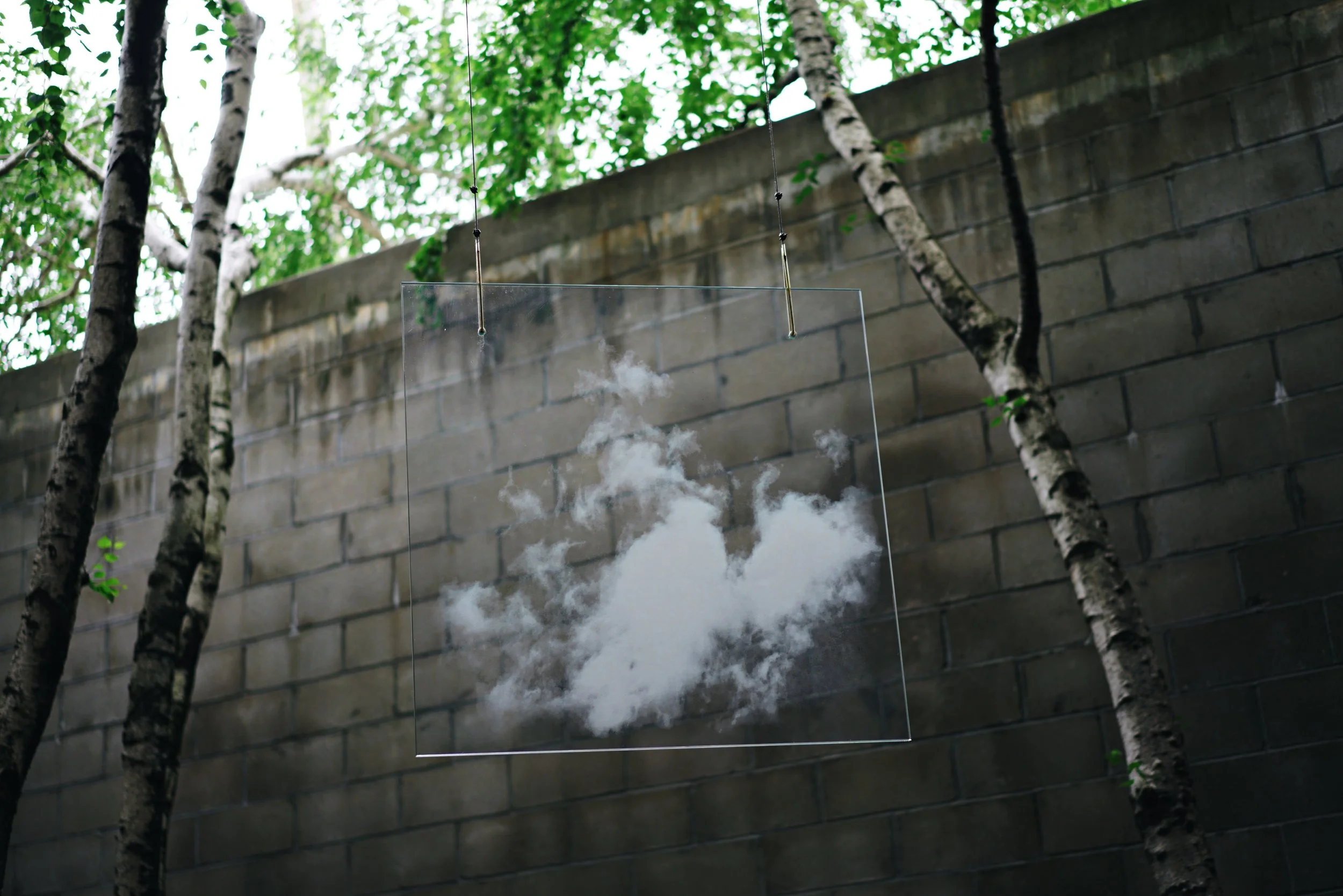Haku-un (White Cloud)
In 2018, the Noguchi Museum commissioned me to create two sculptures for its Sculpture Garden, positioning them in thoughtful dialogue with Isamu Noguchi’s enduring stone works. Out of deep respect for Noguchi’s legacy, I selected glass, a medium that neither competes with nor obscures his sculptures. Rather, it functions as a translucent veil: present yet permeable, subtly activating the surrounding space without interruption.
These works originate from a singular photograph of a cloud, a precise capture of a moment in time. This project represents a continuation of my sustained inquiry into clouds as temporal registers: natural phenomena that mark the passage of time through perpetual transformation. Clouds themselves are composed of millions of tiny droplets suspended in air; similarly, the photographic image is meticulously deconstructed into millions of microscopic points, exceeding twenty million in the largest piece, and materialized as minute fractures within solid panes of optical glass through the manipulation of light.
Glass itself embodies a paradox. When fractured, it becomes opaque, diffusing light into a milky haze. Fragile and prone to shattering, it is paradoxically more enduring than steel or stone, resistant to decay and the ravages of time. Clouds, conversely, are transient and in constant flux, serving as natural clocks that mark time’s passage through continuous formation and dissolution. Both glass and clouds evoke mujō (無常), the Buddhist principle of impermanence. Glass occupies an intermediate state: neither fully liquid nor crystalline solid, manifesting as an amorphous substance suspended in temporal stasis.
The title Haku-un (White Cloud) derives from the zengo Seizan moto fudo, Haku-un onozukara koraisu: Blue mountain does not move; white cloud comes and goes naturally. Zengo (禅語), or Zen phrases, are intentionally succinct and enigmatic, designed less as definitive statements than as catalysts for contemplation. This phrase resists reductive readings that frame it solely as a dichotomy between permanence and impermanence. Rather, it gestures toward their co-arising. The mountain, seemingly immobile within human perception, is nonetheless subject to gradual erosion over geological epochs. The cloud shifts and dissipates within moments. The profound insight resides in recognizing both as expressions of a single, ongoing process of transformation.
Dakin Hart, Senior Curator at the Noguchi Museum, observed:
“Ando’s Clouds combine these two complex concepts: sculptural formlessness and the manipulation of the illusion of time and space in a planar form, in a way that Noguchi would have greatly admired for its enigmatic, ungraspable, suggestive simplicity: at once so much like and unlike clouds themselves.”

















